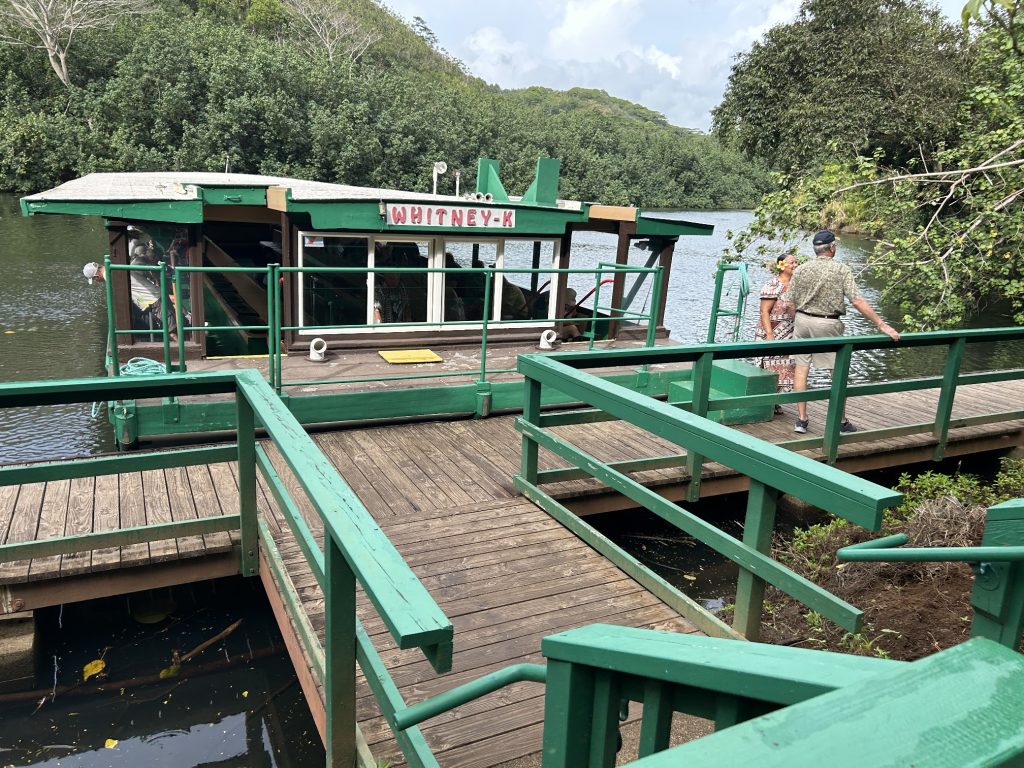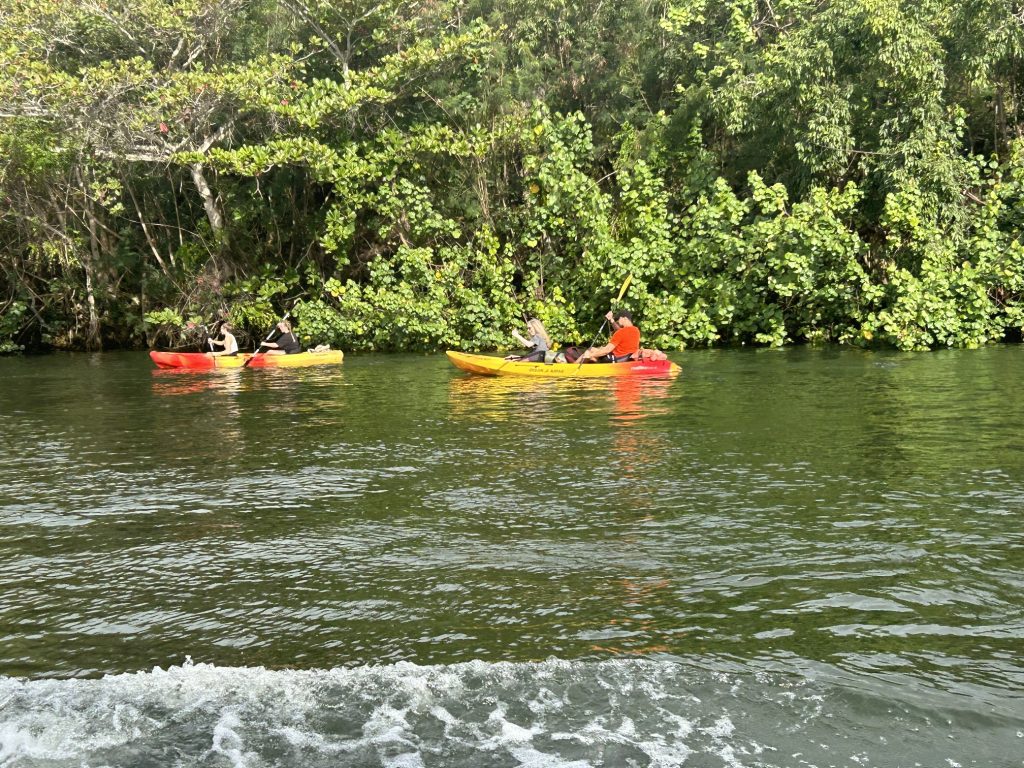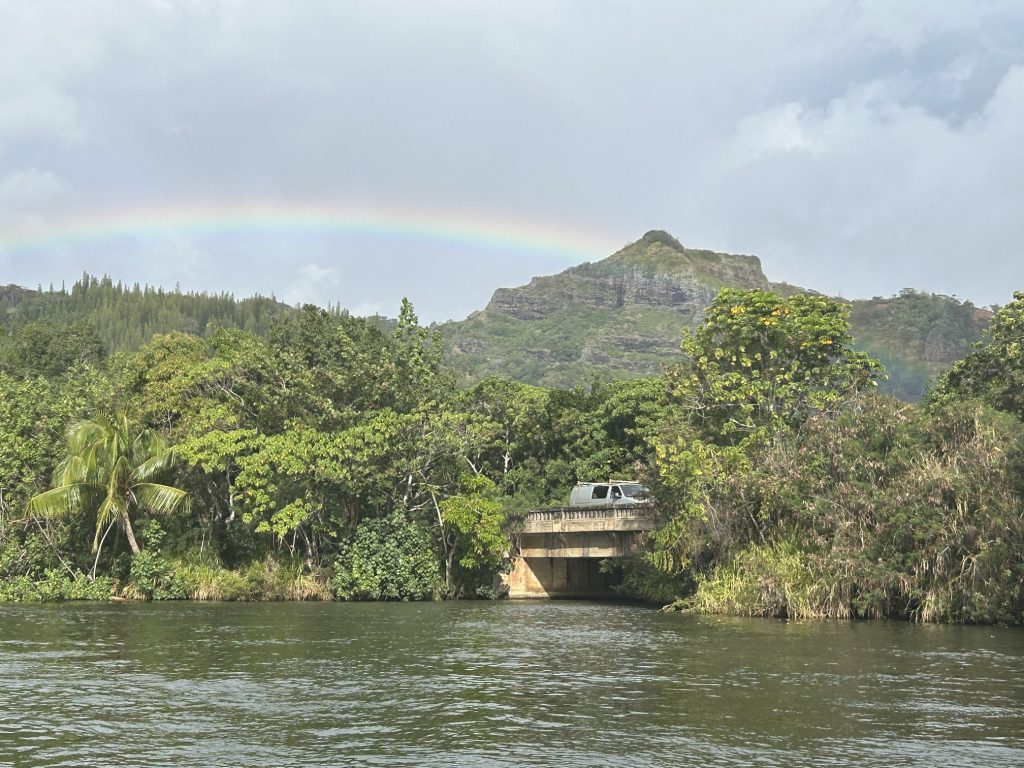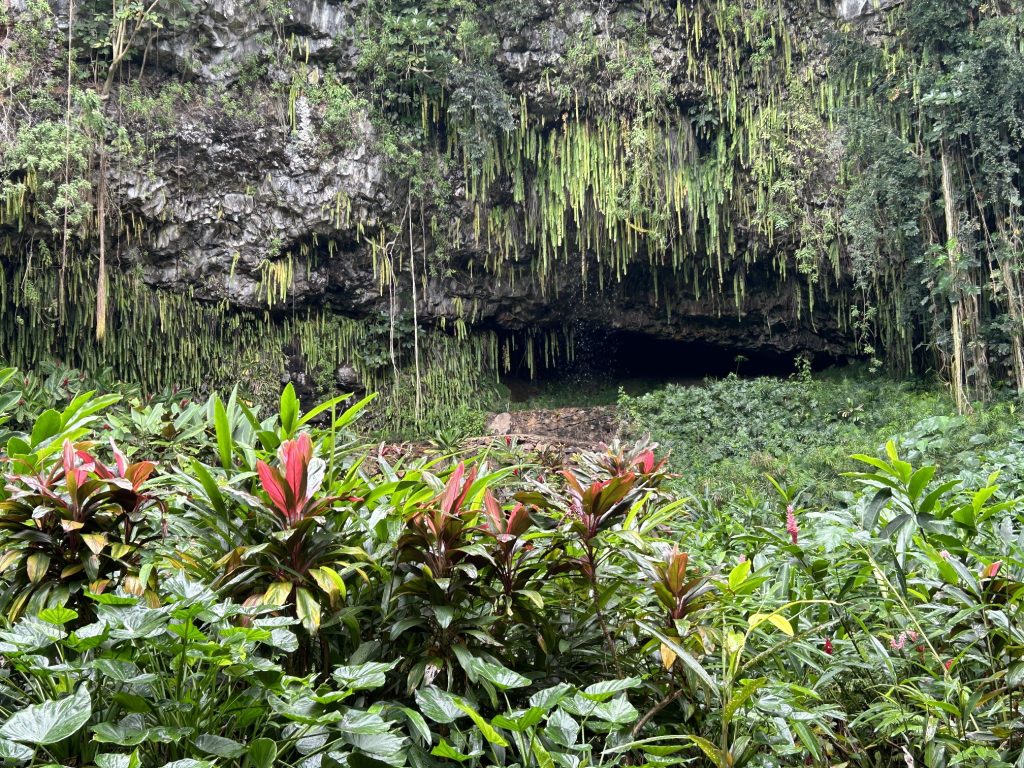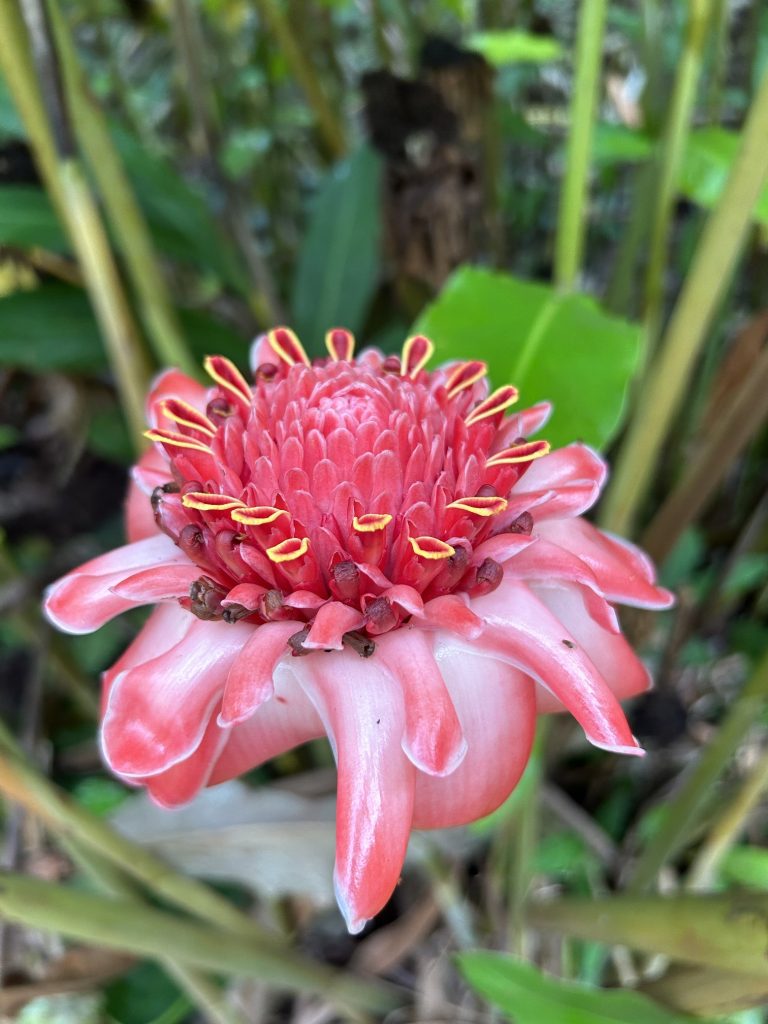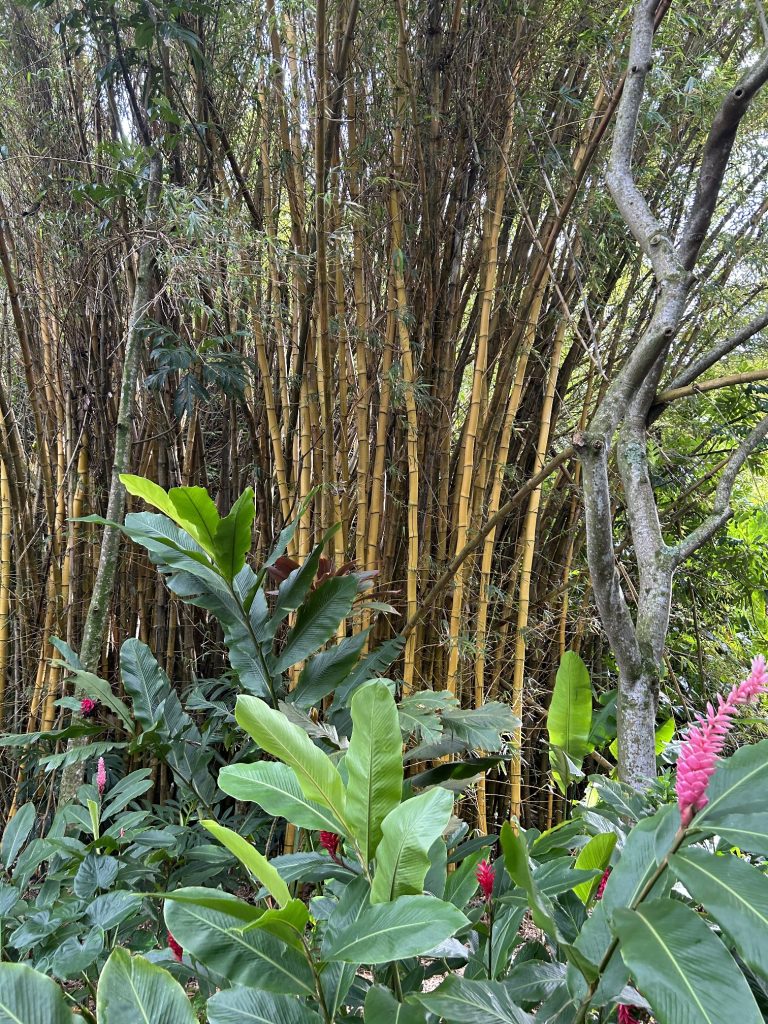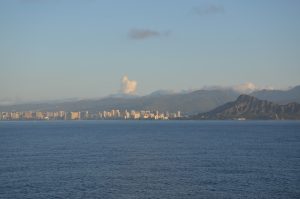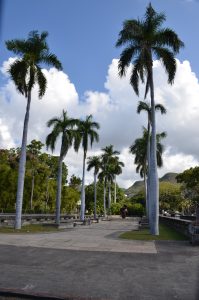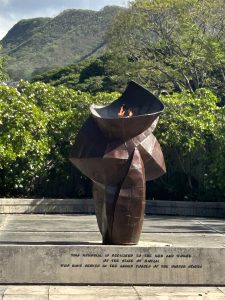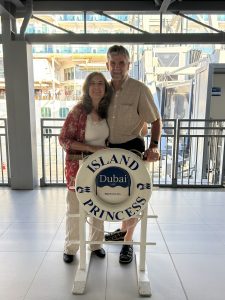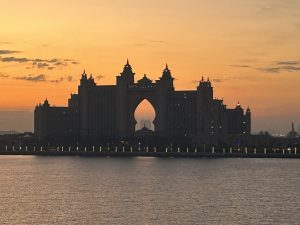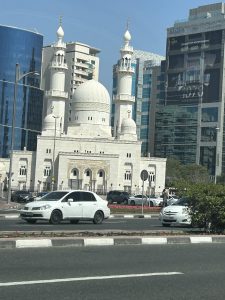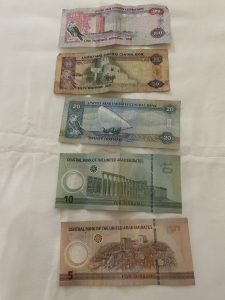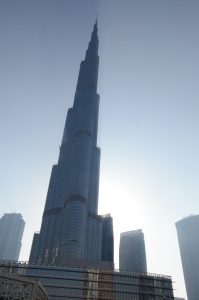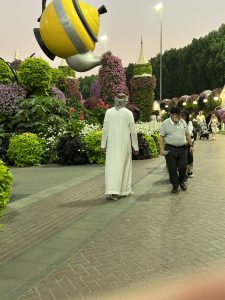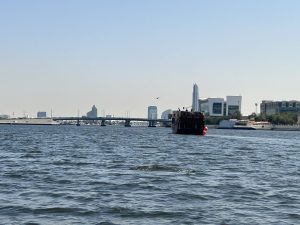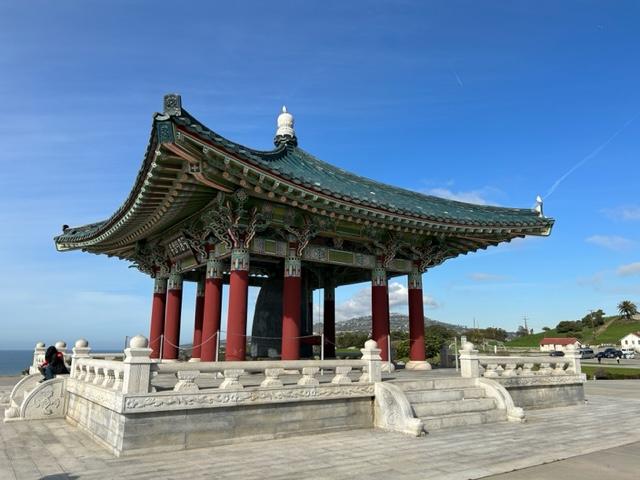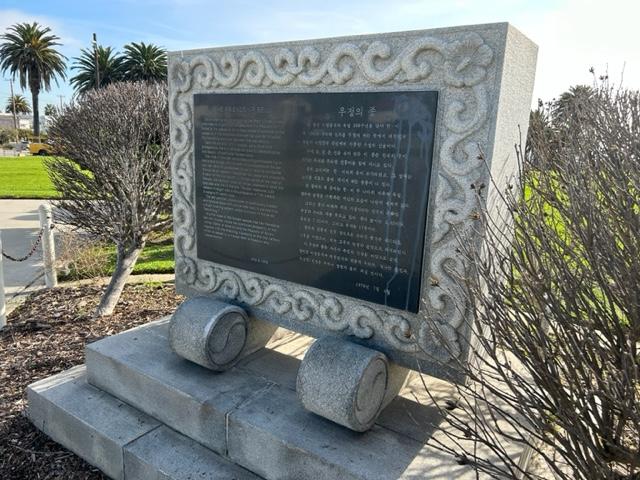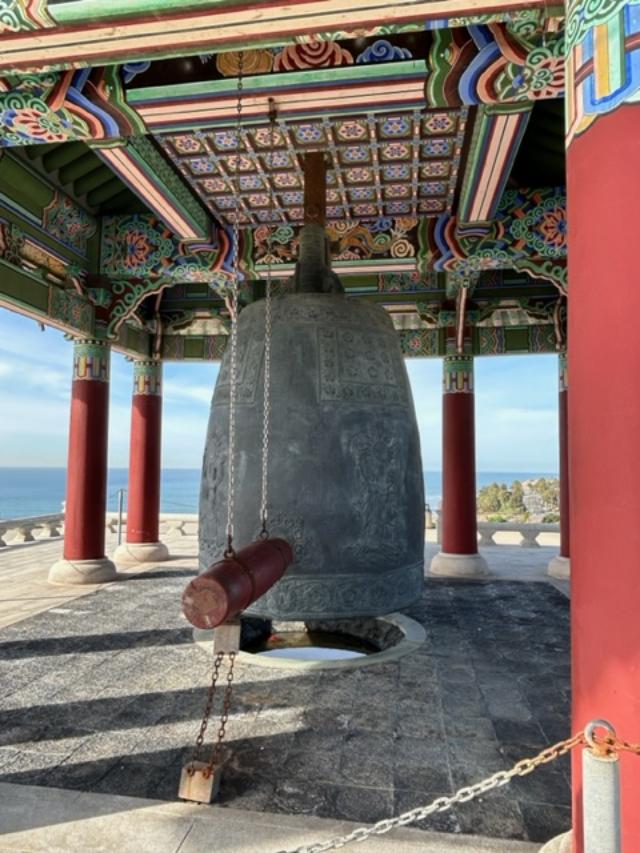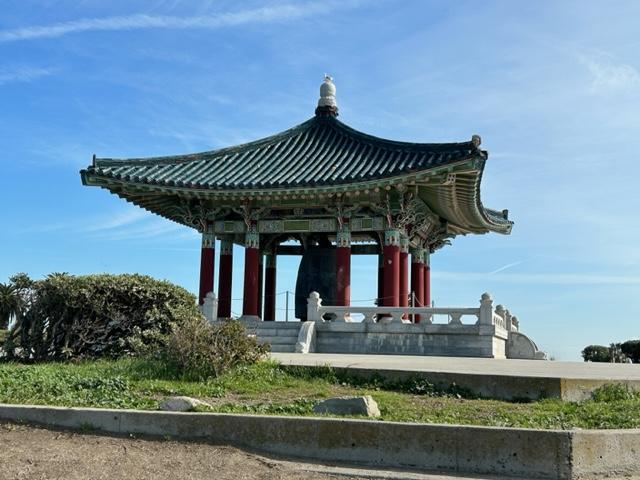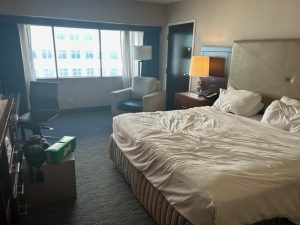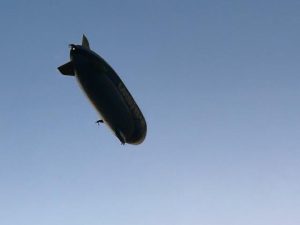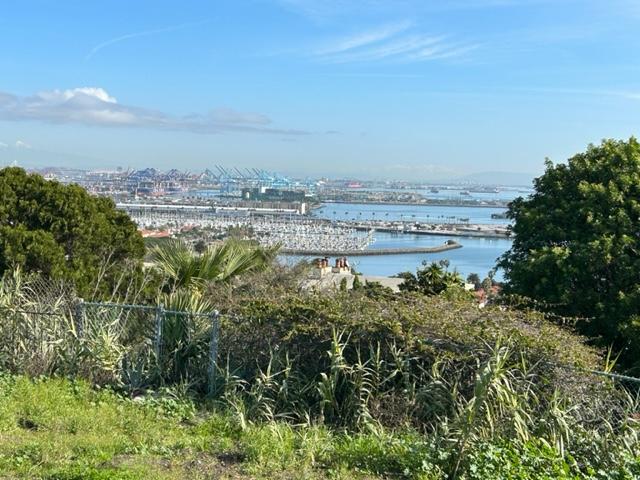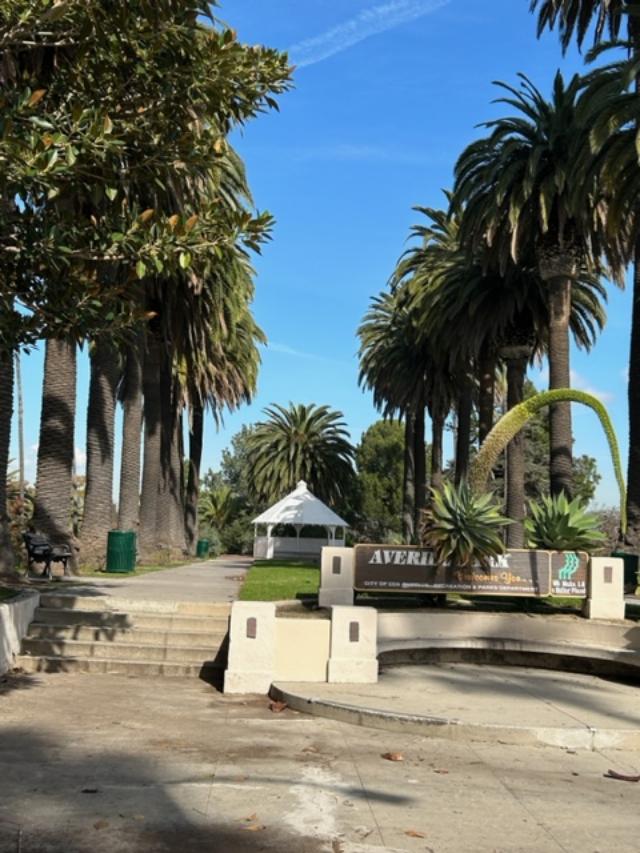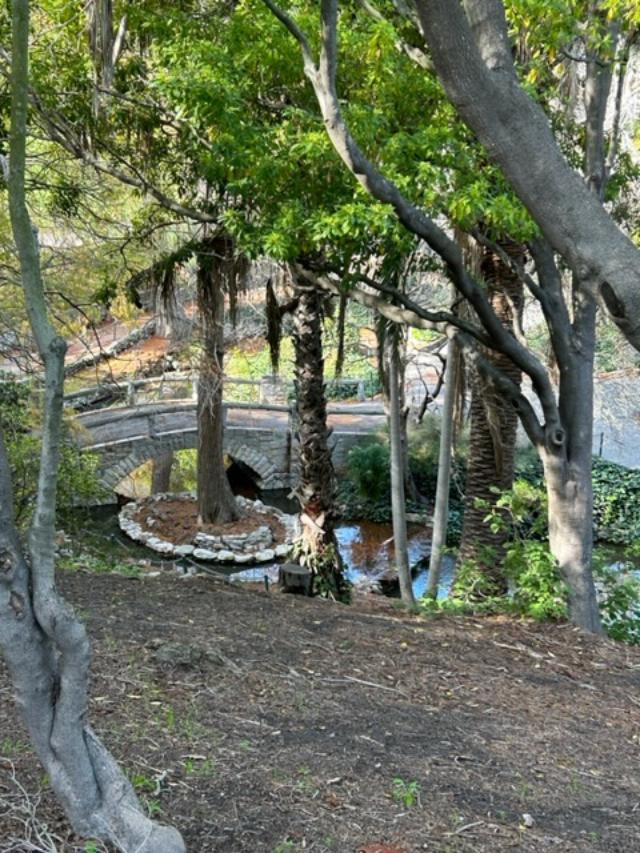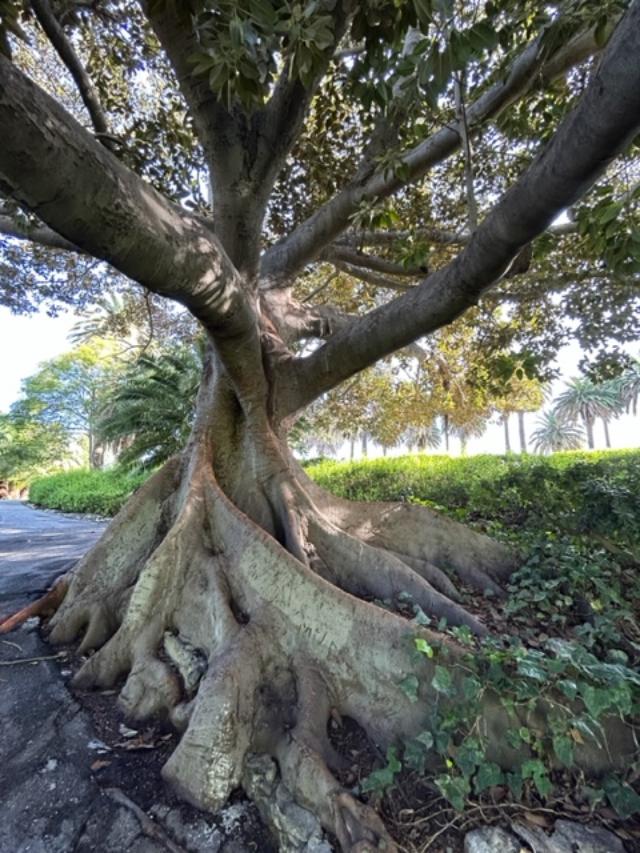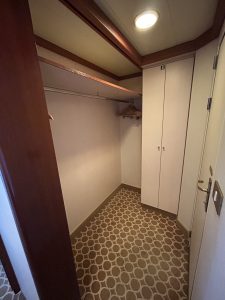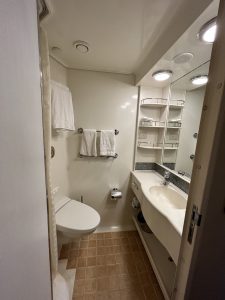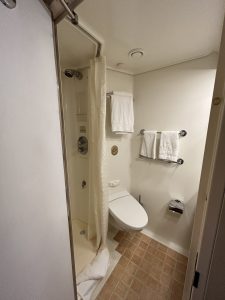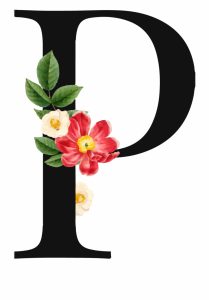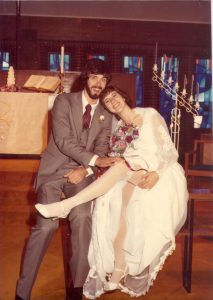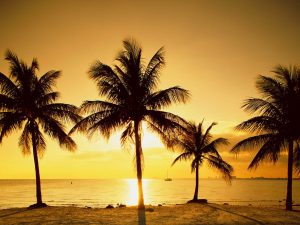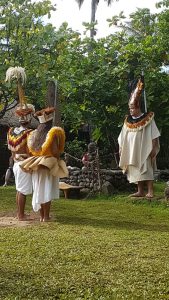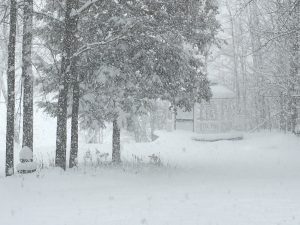Today is day 1 of our Pacific Island Adventure. For our own sanity, we prefer to arrive at the port the day before we set sail on a cruise, which means that we have some time to pass in this location. Normally we would only have 24 hours to fill but a couple of months before we set sail, the airlines changed our flight arrangements which means we would have about 48 hours to occupy ourselves before our cruise set off.
Los Angeles, would not be my first choice of a destination to travel to. As the second most populated location in the USA, it is busy. Personally I prefer the serenity of a forest, to the bustle of large cities, but that is just me.
Normally I would have been content to spend our time in a hotel room or lounging by a pool, because cities just aren’t my thing but this was too much down time, so I needed to find something meaningful to do. I challenged Alan to an ABC adventure which we will be sharing in its entirety during the month of March. For today we offer just a sampling of what we explored.
Los Angeles is the largest city in the state of California. It is rich with ethnic and cultural diversity, giving us plenty of interesting foods to try and fascinating people to observe. Under normal circumstances this might have been enough to occupy our short visit here but our research had revealed a plethora of exciting options and they were just miles from the airport.
Initially we had planned to take a transfer to the hotel in San Pedro but we wondered how we would juggle the extra supplies we wanted to purchase. We will be cruising for a month followed by 2 weeks of land activities. I didn’t want to carry all of our consumables, so a shopping trip was in order. A few minutes of scouting on the internet revealed we could rent a car through Budget Rental Cars. There was an option to pick up at the airport and drop off at the hotel for about the same cost as paying for a transfer but a car would also give us enormous freedom.
This is how our first stop on our Pacific Island Adventure became Target, a large department store/grocery store, located just beyond the airport. It was an added bonus that we would be traveling down Pacific Highway 1, considered one of the most scenic roads in the USA and convenient to get our errands out of the way. Where should we go from here?
Like all big cities, there is plenty to do in the Los Angeles area. There are galleries, museums and performing arts to experience. There are zoos, sports games and educational opportunities. From Disneyland, to the World of Harry Potter and Universal Studios, it seems there is a theme park nearby to fill every interest. While not all are located in Los Angeles, they are all accessible within a reasonable distance from the airport.
The Mediterranean climate attracts millions to discover the city, the waters, the beaches, the Santa Monica Mountains and the San Fernando Valley. The word beach has caught my attention. This was more my idea of a vacation than the towering skyscrapers of the megalopolis of Los Angeles, which sprawls for miles.
After realizing we would be sailing out of San Pedro, just 30 minutes South of the Los Angeles airport, we decided to head that direction. We crave nature and beauty. The entire coastal drive held promise. This area would lead us to beaches and some of the most scenic overlooks along the coast. We set our sights on visiting the Palos Verde area which sits between LA and San Pedro.
This is the area the stars and starlets call home. “Star gazing” is a sport in this city. We are not star struck people. In fact, the only stars I will be looking for today will be starfish! In Los Angeles, Hollywood Boulevard and Rodeo Drive are just two of the places you might run into your favorite A-list celebrities. Often they can be seen going about their normal errands, a cell phone in one hand and a triple shot machiatto in the other. On our adventure, we would be keeping an eye open for them along the boardwalks and piers of Manhattan Beach instead.
Manhattan Beach
Just 5 miles from the airport and 19 miles from downtown LA, we quickly discover Manhattan Beach. This short jaunt to the coast has us busy as we explore an amazing pier, built in 1929. Many consider this pier to be among the prettiest in Los Angeles county and I am in my photographic glory trying to capture it.

As we stroll out over the water, we should have been able to see the entire Santa Monica Bay, the Palos Verdes Peninsula, and Catalina Island but there is a haze. It feels like a different world from the city which lies directly behind us. At the end of the pier is a beautiful two story octagonal roundhouse which has been converted into an aquarium, offering both fresh and saltwater tanks, a touch pool and many educational exhibits. Best of all, its completely free!
Coming off the pier I realize we are so close to the airport and city that we can still see the planes arriving and skyscrapers which occupy LA! We took a few minutes to explore the underside of the pier. The recent rain in this area has created a high surf which is now fascinating to watch.
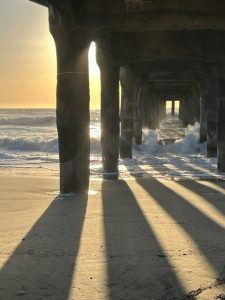
Our next decision was whether to play a game of volleyball on the 2 mile long beach, watch the surfers or take a stroll along “The Strand”.

The Strand
The Strand is a 22-mile paved path, extending from Pacific Palisades (close to Santa Monica) to Torrance. Some people refer to The Stand as the “Manhattan Beach Boardwalk.” Some of the countries most expensive real estate is situated in this area. This pathway is so long that it actually connects to our next destination, which is Hermosa Beach. Since it is only two miles, we could walk along the Strand but the day is drawing to a close so we will drive there but many choose to run, bike or skateboard. First we have a little more to discover in the Hermosa area.
Farmers Market
Before heading in that direction we take a little time to explore the downtown area of Manhattan. We have arrived on a Tuesday, which lucky for us is the one day of the week that the Farmers Market is open. From 11am-4pm, 45-50 vendors sell their goods. There is a wide variety of products to choose from including cheese, vegan cheese (made from cashews), dates, honey, berries, orchids, olive oil, ice cream, hummus, fish, and prepared foods. They even have activities for the kids such as a mini-train and face painting! This is one of the best markets I have ever been to.
Shopping
Following our trip to the market we did a bit of shopping in the downtown area then wandered along Manhattan Boulevard and Manhattan Avenue. This is one of the wealthiest areas in the LA area, yet this beautiful beach town offers an inviting welcome to all. There is something humorous about spotting a 20 year old driving a Ferrari. We are all enjoying the same beautiful views, even though our experiences might be slightly different!
Ice Cream
As we finished the day in Manhattan Beach we decided it was time for an ice cream.We never pass an opportunity to sample the local recommendations, so when we heard about Manhattan Creamery, we knew we had to find it. The store has a party-like vibe. They are famous for their signature Cream’wich ice cream sandwich made with artisan cookies. In addition customers may choose macrons, caramel apples, candy, cupcakes and other frozen treats. It is a sweet lover’s paradise. After loading up, it is time to move to our next location.
Hermosa
As we make our way along the coast we quickly come to our second stop. Hermosa lies just a few miles from Manhattan Beach. There is a different vibe in this community, it is more relaxed than Manhattan. This town is filled with art. We set out on a walking tour to locate some of the decorated utility boxes which line the street. Murals cover numerous buildings. The one below was visible for miles and we had to take a close up look to prove to ourselves that it was indeed just a painting!
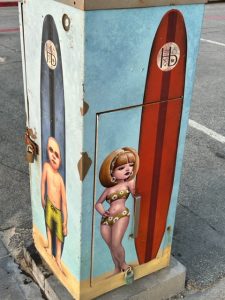
 The Strand continues through this town. Palm trees guide us towards the open space.
The Strand continues through this town. Palm trees guide us towards the open space.
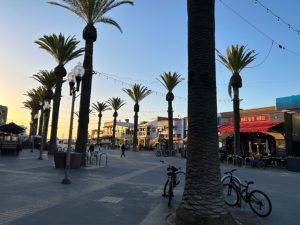 The surf was so high today, they have closed off the pier. We watch the sunset as a flock of birds takes flight. We take a final walk along the Strand, a lone volleyball player practices in the blaze of orange. The first of many beautiful sunsets we hope to see.
The surf was so high today, they have closed off the pier. We watch the sunset as a flock of birds takes flight. We take a final walk along the Strand, a lone volleyball player practices in the blaze of orange. The first of many beautiful sunsets we hope to see.

Redondo Beach
As the sun begins to dip along the horizon we hop to our last beach of the day. This beach is filled with romance. The sea beckons as light scatters diamonds across the surface of the water and waves swell to propel surfers toward the shore. Gondolas line up ready to whisk lovers to embrace a sunset. Tour boats sit ready to embark on dinner cruises and whale watching tours. Overseeing it all are the seals and sea lions barking their orders to embrace the moment. At least this was what we had expected to find from all our research, but none of that was here! We suspect that many boats were moved as a series of strong storms passed through the area for the past couple of weeks.
What we did see was a beautiful pier filled with every variety of eateries ranging from fair foods to fine dining.
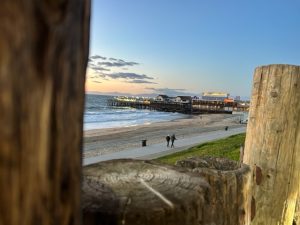 We chose to eat at Tony’s where pub food and bar are located upstairs and fine dining is in the lower level, So our evening came to a close over a glass of wine, next to a roaring fire, looking over a beautiful surf.
We chose to eat at Tony’s where pub food and bar are located upstairs and fine dining is in the lower level, So our evening came to a close over a glass of wine, next to a roaring fire, looking over a beautiful surf.
During our two days in the Los Angeles area, our days have been packed with beaches and beautiful views Some of the most valuable real estate in the USA exists along this California coast. So many of our adventures are completely free and absorbing this stunning beauty leaves me contemplative. Sitting high upon the cliffs, these amazing homes look out over the Pacific Ocean. There is a world of discovery ahead of us.
Visiting the cliffs, beaches and hiking trails, we can almost imagine that we are far from civilization but then we hop on another highway and are quickly reminded that nearly 4 million people call this area home. Like our circulatory system, I can almost feel the coursing of life running through society.
As night approaches, the city takes on a whole new vibe. Searchlights arc through the air, announcing the latest silver screen premier. Like a heartbeat there is a pulsating sound which seems to resonate atop every rooftop bar, as the music, pools and alcohol draw slinky-sexy crowds to come out and play.
The last 48 hours have already been filled with travel and sight seeing. We have even made a final shopping trip to purchase the last of our cruise supplies. Tonight, safely tucked back into our hotel room at the Crowne Plaza in San Pedro, California we are happy enough to begin to wind down. We can’t resist one last adventure as we head to the Rainbow Lagoon, where the illuminated Swan Boats guide gracefully across the surface of the water. As we cuddle together on this January evening we are wrapped in a hug by the warm lights of this shining city. Los Angeles hasn’t turned out to be so bad after all.
How would your ABC Adventure look in the LA area?
This is city life. With so much to offer, there is no excuse for boredom. We are happy enough to have been able to play in this area for 48 hours. As with most of our adventures, we have filled every moment. We are now exhausted and ready to spend the next 5 days at sea before our next stop which will be in Oahu, Hawaii.
The sea is calling, my bags need repacking and we are suffering from the time change. We need an early night before embarking on our cruise tomorrow.
Tomorrow we set sail on our 42 day Pacific Island Adventure! We invite you to continue to follow along.


